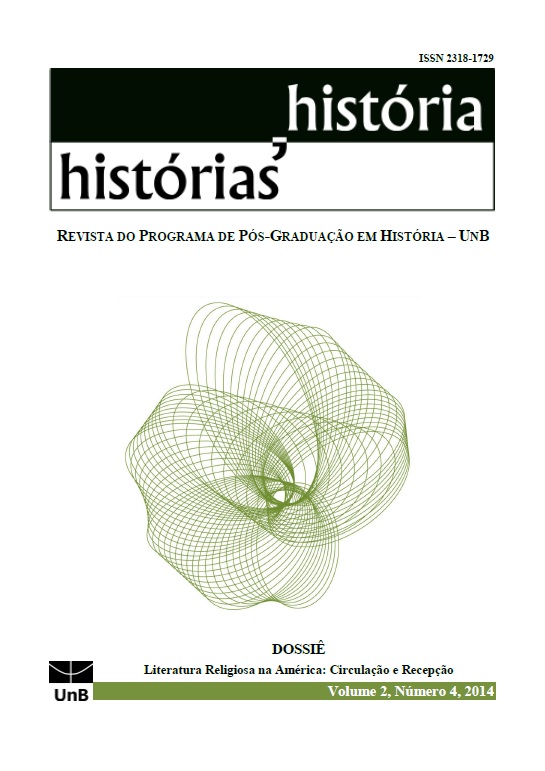"Quomodo legis?" A leitura à luz do método inaciano na novela do jesuíta Alexandre de Gusmão:
"História do Predestinado Peregrino e de seu irmão Precito" (1682)
DOI:
https://doi.org/10.26512/hh.v2i4.10807Keywords:
Alexandre de Gusmão SI, literatura, religião, exercícios espirituais, história da leituraAbstract
O objeto do artigo é a novela alegórica História do Predestinado Peregrino e de seu irmão Precito escrita no Brasil pelo jesuíta Alexandre de Gusmão e publicada em 1682, tendo várias reedições. Gusmão ocupou na Companhia de Jesus funções importantes dentre os quais a direção de um Colégio próximo da cidade de Salvador. A hipótese proposta é a de que a novela veicula no Brasil conteúdos e métodos dos Exercícios espirituais de Inácio de Loyola. O texto segue também as orientações da Ratio Studiorum. Portanto, Gusmão teria concebido a novela como importante veículo de circulação dos exercícios inacianos. Além disto, mostra-se que a novela foi texto pioneiro escrito com o objetivo pedagógico de iniciar à leitura o público brasileiro: para esta iniciação, a novela sugere um método de leitura orientado pelos Exercícios inacianos.
Downloads
Downloads
Published
How to Cite
Issue
Section
License
Authors who submit papers with this journal agree to the following terms:
a) Authors retain copyright and grant the journal right of first publication with the work simultaneously licensed under a Creative Commons Attribution License that allows others to share the work with an acknowledgement of the work's authorship and initial publication in this journal.
b) Authors are able to enter into separate, additional contractual arrangements for the non-exclusive distribution of the journal's published version of the work (e.g., post it to an institutional repository or publish it in a book), with an acknowledgement of its initial publication in this journal.
c) Authors are permitted and encouraged to post their work online (e.g., in institutional repositories or on their website) prior to and during the submission process, as it can lead to productive exchanges, as well as earlier and greater citation of published work.




